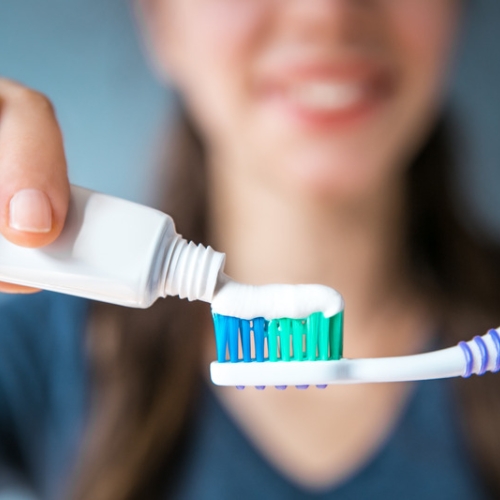Comprehensive Guide to Recognizing and Treating Dental Issues
Maintaining healthy teeth is essential not just for a beautiful smile but also for overall well-being. Recognizing early signs of dental issues can help you take proactive steps, potentially saving you from costly treatments and preserving your smile. This guide will help you understand how to identify unhealthy teeth and provide solutions to address these issues affordably.

Understanding Dental Health: Key Signs and Solutions
1. Recognizing the Signs of Unhealthy Teeth

Bad Breath
Persistent bad breath, also known as halitosis, can be an early warning sign of dental issues. It may indicate gum disease, cavities, or other oral health problems that require professional attention.
Toothache and Sensitivity
A toothache can be a constant throbbing pain or occasional sharp pain. Sensitivity to hot or cold foods and beverages is another indicator that something might be wrong. These symptoms often suggest tooth decay or damage.
Bleeding Gums and Gum Recession
Bleeding gums during brushing or flossing can indicate gum disease. Gum recession, where the gums pull back from the teeth, exposes the roots and can lead to further dental issues if not addressed.
Loose or Darkening Teeth
Teeth that feel loose or are changing color to grey, brown, or black can signal advanced decay or gum disease. It’s crucial to seek professional help if you notice these changes.
Other Indicators
Additional signs of unhealthy teeth include cavities, a bad taste in the mouth, and sensitivity to hot or cold foods and beverages. These symptoms should prompt a visit to the dentist for a thorough examination.
2. Common Symptoms of Tooth Decay and Damage
Visual Symptoms
Look for grey, brown, or black spots on your teeth. These discolorations often indicate decay.
Pain and Tenderness
Continuous pain that keeps you awake or sharp pain without an obvious cause can signify serious dental issues. Tooth sensitivity, particularly when eating or drinking something hot, cold, or sweet, is another red flag.
Bad Breath and Taste
Persistent bad breath or a bad taste in your mouth can be signs of decay. These symptoms often result from bacteria buildup and should not be ignored.
Tooth Discoloration and Structural Damage
Decay can cause visible changes in tooth color and structure. If you notice any discoloration or damage, it’s essential to seek dental care promptly.

3. Affordable Solutions for Treating Dental Issues

Plaque and Tartar Removal
Regular dental hygiene appointments can effectively remove plaque and tartar, preventing them from causing more severe issues.
Dental Fillings
For cavities, dental fillings are a cost-effective solution that can restore the tooth’s function and appearance.
Crowns and Root Canals
In cases of severe decay, crowns or root canals may be necessary. While these treatments are more expensive, they are crucial for saving the tooth and maintaining oral health.
Gum Treatments
Receding gums can be treated with various methods, depending on the severity. Early intervention can prevent more extensive and costly procedures later.
Preventative Measures
Investing in preventative care, such as regular dental checkups and good oral hygiene practices, can save money in the long run by avoiding the need for more expensive treatments.
4. Preventative Care Tips to Maintain Healthy Teeth
Daily Oral Hygiene
Brushing twice a day and flossing daily are fundamental practices for maintaining dental health. Using fluoride toothpaste helps strengthen tooth enamel and prevent decay.
Regular Dental Checkups
Routine visits to the dentist can help detect problems early. Your dentist can provide professional cleanings and check for signs of decay or gum disease.
Healthy Diet
A balanced diet that limits sugary and acidic foods can help keep your teeth healthy. Foods rich in calcium and vitamins are beneficial for strong teeth and gums.
Avoiding Harmful Habits
Habits like smoking, chewing ice, and using teeth as tools can damage your teeth. Avoiding these habits can protect your oral health.
Using Dental Products
Choose dental products recommended by your dentist, such as fluoride toothpaste, antiseptic mouthwash, and dental floss. These products can enhance your daily oral care routine.

5. When to Seek Professional Dental Help

Persistent Symptoms
If you experience persistent bad breath, pain, or sensitivity that doesn’t go away, it’s time to see a dentist. These symptoms could indicate serious issues that need professional care.
Visible Damage
Discoloration or structural changes in your teeth should prompt a dental visit. Early intervention can prevent further damage and more complex treatments.
Gum Issues
Bleeding or receding gums are signs of gum disease that require professional attention. Early treatment can prevent tooth loss and other complications.
Preventative Visits
Even if you don’t have symptoms, regular dental checkups are essential. They allow your dentist to monitor your oral health and catch any issues early.
Conclusion
Recognizing the signs of unhealthy teeth and taking early action can help maintain your oral health and save you from costly treatments. At Camrose Dental, we are committed to helping you keep your smile healthy and bright. Schedule an appointment with us today to ensure your teeth are in top condition.
Don’t wait until it’s too late! Book your dental checkup with Camrose Dental today and keep your smile healthy and bright. Call (780) 672-0300 or contact us to schedule an appointment.


